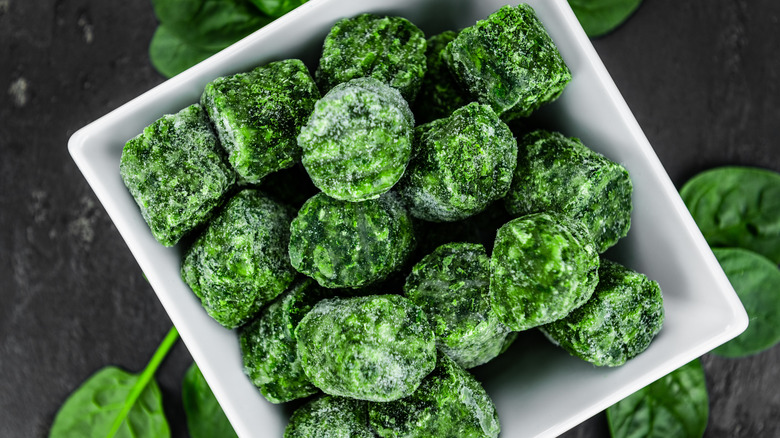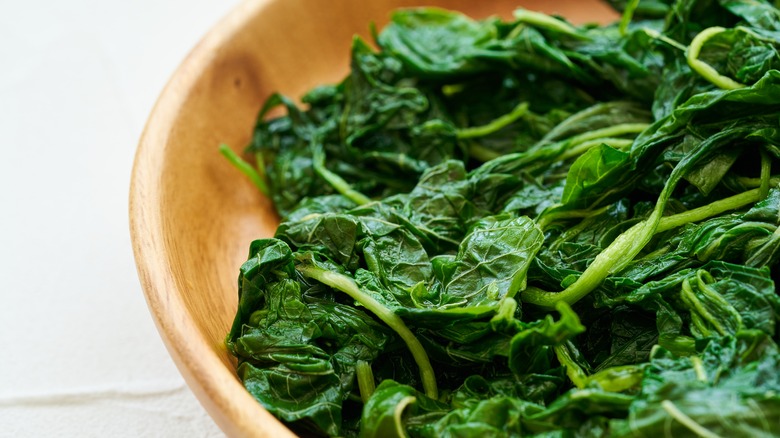Defrosting Frozen Spinach Isn't As Necessary As We Thought
Defrosting spinach can be a pain. The easiest method is to set the spinach in a colander in the fridge overnight; however, this can be difficult to remember to do. If you're in a pinch, you can run the spinach under water or place it in the microwave on the defrost setting. No matter which way you defrost spinach, though, the most tedious part is having to squeeze out all the excess moisture so it doesn't ruin the texture of your food. All of this hassle can make it more tempting to spend a few extra dollars on fresh spinach at the store, even though it will spoil much sooner.
In actuality, defrosting spinach isn't always a necessary step. Adding frozen spinach straight to certain dishes works surprisingly well. For meals that can handle the moisture, add frozen spinach straight from the bag and avoid the time and effort it takes to defrost.
When defrosting spinach isn't necessary
Recipes often call for spinach to be defrosted because of excess moisture. When spinach thaws, it releases liquid, which needs to be squeezed out of the spinach so that it's dry. Adding frozen spinach directly to a dish, therefore, results in this liquid being retained in the pan. Defrosting spinach isn't necessary when cooking something that won't be ruined by this liquid, such as soup. In this case, because the spinach is already engulfed in other liquid, a little excess wouldn't hurt. However, it might be smart to taste the soup after the spinach is heated to ensure any seasonings weren't diluted and adjust accordingly.
In addition, defrosting spinach isn't necessary in cases where the spinach is cooking over a high heat that would allow the liquid to evaporate. Cases like these include sautéing or stir-frying — just be careful not to add any sauce until after the moisture has cooked away in order to conserve the consistency.
Finally, frozen spinach can be added directly to something cold and blended like a smoothie, as this is a case where the spinach isn't heating and therefore isn't releasing any liquid.
In any of these cases, this spinach hack can save you a lot of time and effort versus having to defrost.
When you should still defrost spinach
Cooking spinach directly from frozen won't work in meals that the addition of liquid would ruin. One instance of this is when the food can become soggy. This includes pizzas, where the excess liquid could result in a waterlogged crust, or any sort of pie or baked good where spinach is included. In these cases, it's better to defrost the spinach and squeeze out as much water as possible.
Another situation in which defrosting is better is when the consistency of the food would be affected by extra liquid. This includes eggs, such as quiches or frittatas, which wouldn't cook to the appropriate texture if liquid were added. Another example is many types of sauce, particularly thicker ones that have a more delicate ratio of cornstarch or other solids dissolved to make them thicker. Just as creamier sauces can lose their texture if heated too quickly, the same goes with adding extra moisture. As tedious as it may be, you'll want to continue defrosting spinach in these cases to end up with the best-tasting result.


